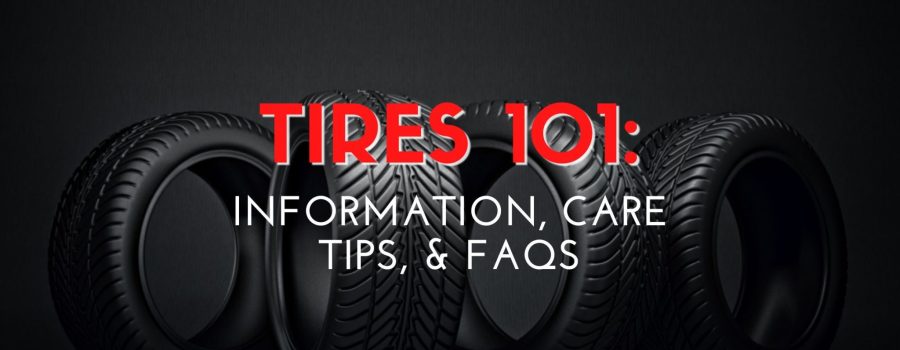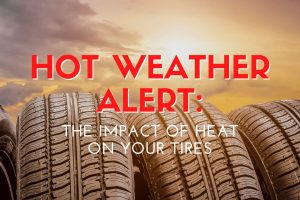Tires 101: Information, Care Tips, & FAQs
Most people do not give the tires on their vehicle a second thought unless there’s an issue. We thought we would provide a snapshot of information about your tires in case you might need some basic tire knowledge someday.
The Basics
Your tire’s overall design combined with proper installation and operation will help to keep your vehicle safe under many driving conditions.
Tires rely on air pressure to maintain stability on the road and to smooth out your ride as tires come into contact with many different surfaces. Tires provide your vehicle with the traction that you need to steer and stop. When roads are wet, the gaps in the tires’ design channel water out to help you maintain traction with the road.
Normal Wear
- Since tires are made of rubber, they will wear out over time. Tires have a wear rating stamped on the side of the tire indicating the number of miles that can be expected under normal conditions before they need to be replaced. They also have traction and temperature grades also indicated on the sidewall of the tire.
- Keeping tires operating at their normal air pressure is vital to ensure even wear. Tire pressure can change with how warm or cold the weather is.
Care and Maintenance
Today’s tires are made better and last longer. Although the initial price might be slightly higher than tires manufactured a few years ago, the cost per mile is lower overall due to the expected longer life of the tire. In fact, new tires can last up to 80,000 miles, and proper care can extend the life of your investment even farther.
Check the Air Pressure
Every car built after 2009 includes a tire pressure monitoring system. It is recommended to have the tire pressure checked (and possibly rotate your tires) at the time of each oil change to achieve the best possible life of the tire.
Rotate Your Tires
Tires should be rotated every 5000 to 7500 miles based on your vehicle’s manufacturer’s recommended schedule. Rotating the tires helps them wear evenly. For the best contact with the road, optimal steering, and decisive braking, all four tires need to have proper air pressure to help ensure even wear.
What about Run-flat Tires?
Run-flat tires have a different internal structure than regular tires in order to keep the tire operating after a puncture. The distance that a run-flat tire can be operated after it has been punctured is limited to about 50 miles at roughly 50 miles per hour. Specifications may vary based on the tire, but this feature is meant to get a vehicle safely to a repair shop to replace or repair the tire rather than as a way to continue using the tire after it has been punctured.
What do all the letters and numbers mean?
Tire ratings are letters and numbers stamped on the side of the tire to signify treadwear expectations, speed ratings, traction and temperature ratings and load capacity. Every vehicle is designed to work with a specific type of tire. Although other tires might fit your vehicle, only the tires rated specifically for your vehicle are safe to use. For example, a Chevrolet Corvette and a Ford F150 are going to have completely different designed tires based on what the vehicle is built for.
Contact Us
Want more information? Give us a call! Postle Tire Barn is a family owned and operated tire and automotive shop serving the automotive needs of Tuscaloosa and West Alabama. Feel free to call us or stop by if you have questions about your vehicle. We’re located on Jug Factory Road in Tuscaloosa behind McDonalds.





Recent Comments